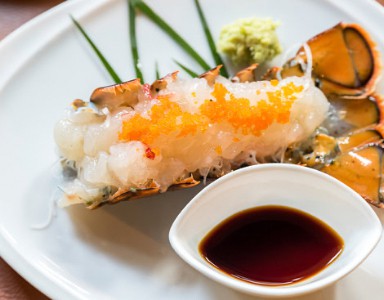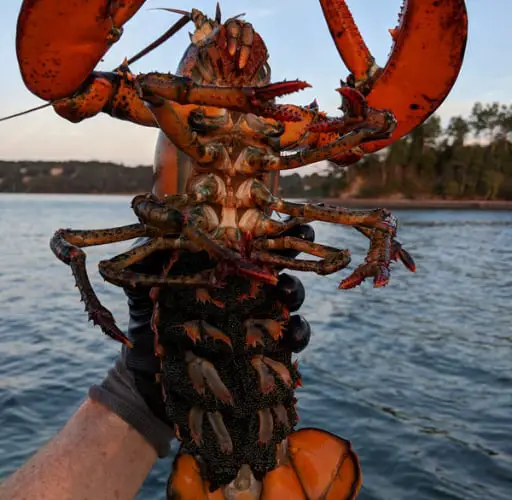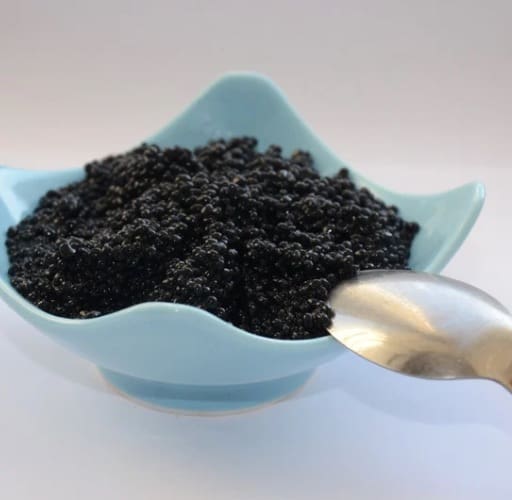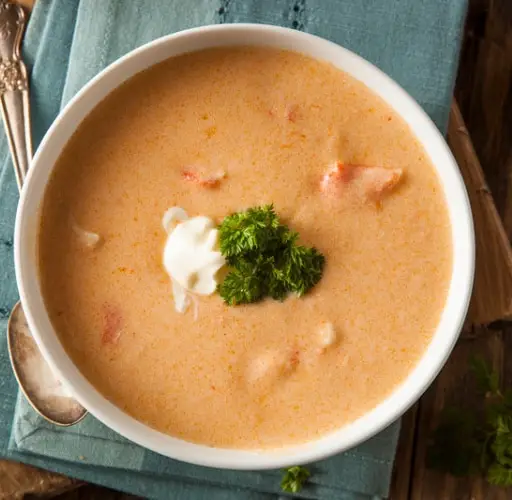If you ever wanted to know more about roe, the greenish-black stuff situated inside and at the abdomen of certain lobsters, then you’re at the right place.
This article will tell you everything you need to know about roe in lobsters from what it is, where it’s located to it’s nutrition and how to serve it.

What Is Roe In Lobster?
The roe in lobster, also known as coral, due to the vibrant hue it bears when cooked, is simply the fully ripened unfertilized (or sometimes fertilized) eggs of the female lobster.
Unfertilized roe are typically located inside the lobster’s body cavity, which can extend towards the lobster’s abdominal region.
Quite rarely, female lobsters with fertilized eggs can be caught and marketed with the eggs already deposited as dark green balls underneath the tails and secured firmly in place by the swimmerets.

Initially, all roe bear a greyish to dark green color, which quickly turns bright red, pink or translucent upon cooking.
Roe is fairly neutral in flavor and maybe a little briny by virtue of the fact that it came out from a naturally salted water.
It is very important to distinguish roe from the tomalley or lobster paste which is similar to the hepatopancreas of crabs (a.k.a crab butter) and is responsible for carrying out digestion, absorption of food and detoxification — when the lobster is alive but can also serve as a creamy delicacy when the lobster dies.
The hepatopancrease can be identified as the soft, greenish mass located in the cephalothorax, or the head and body section of the lobster.
Do All Lobsters Have Roe?
As we have mentioned above, not all lobsters have roe. Only female lobsters carry roe, as it indicates their fertilized or unfertilized eggs depending on where it is located.
Male lobsters are not known to produce eggs and therefore cannot have roe.
If it interests you to be able to tell a female lobster apart from a male lobster, check for which has a visible roe underneath the tail.
Sometimes, the eggs won’t be fertilized and so will remain inside the lobster.
In these situations, you can make the distinction by examining the first swimmerets of the lobsters: the small, feathery appendage located at the connection between the abdomen and thorax.
If it’s a female, the first pair of swimming legs would be softer, feathery and more delicate, whereas in males, they’re stiffer and bony.
Additionally, the width of the female’s tail is generally broader than the male’s tail to allow for accommodation of the roe after they’re fertilized.
What Does Lobster Roe Look Like?
Here’s what a lobster roe looks like under the tail (gray to dark green mass).

Here’s what a cooked lobster roe looks like: (orange to red mass).

Is Lobster Roe Nutritious?
Lobster roe, like fish roe, is indeed nutritious as it contains protein which is essential for building and repairing tissues and maintaining overall good health, Omega-3 fatty acids which are essential fats that contribute to a healthy heart and overall improved immune system, and a variety of vitamins and minerals such as vitamin C, vitamin B6, and trace minerals like cobalamin, magnesium, iron and calcium.
A tablespoon of it also contains roughly 40 calories with the majority of the calories coming from fat.
With that said, it should also be noted that Lobster roe has a high amount of cholesterol and therefore should be consumed in moderation to reduce the effects of high cholesterol in the body. Additionally, if you have a shellfish allergy, you should avoid eating lobster roe completely.
Is Lobster Roe Caviar?
Lobster roe is not considered caviar in the traditional sense because true caviar comes from sturgeon, a specific type of fish in the Caspian Sea and Black Sea.
Caviar refers to the salt-cured eggs of sturgeon, and it is a luxury food product known for its marine, nutty flavor and creamy texture and is used mostly as a spread.

However, lobster roe is sometimes referred to as “lobster caviar” because of its similar appearance and texture to fish roe, and the fact that lobster roe is also the egg derived from lobsters just like abode is the egg derived from the sturgeon fish.
How Do You Eat Lobster Roe?
Lobster roe isn’t a delicious ingredient on its own, although some people find its marine and waxy taste quite interesting, while a majority of people prefer to mix it up with something or use it as an ingredient in cooking.
When it comes to eating lobster roe, one of the unpopular ways to do it is on its own. Most of the time, the lobster is cooked, so the eggs inside or outside are cooked, before they are extracted, mixed with seasoning like salt and pepper and consumed that way.
Alternatively, ½ tablespoons of the collected roe (read below on how to remove roe from a lobster) can be mix with ½ cup of melted butter or a delicious mayo like kewpie, ½ teaspoons of parsley or other herbs, ½ teaspoons of salt and a small squeeze of lemon juice and used as a spread on sandwiches, bread or even crackers.
You can also use it as a garnish for mashed potatoes, on grilled lobster itself, oxtail soup, steak and other seafood products.
Another use for lobster roe is “lobster paste”, which is the combination of lobster roe and tomalley – the green-brown substance present in the upper body cavity of the lobster once you open it.
This blend can be spread on warm, crusty bread or added to dishes for an enhanced seafood flavor.
Lastly, lobster roe can be added to soups like lobster bisque to bring extra richness, thickness as well as color to the table.
You can boil the roe together with the lobster in the early stages of the soup preparation, or extract it from the tail and roast it in the oven together with the rest of the meat and veggies, or, you can even use it as an ingredient in the broth.

Just make sure to fire it up with some heat (at any stage you’re adding it) to ensure that it is properly cooked before you eat it, as it would taste better that way.
And one last thing when it comes to eating lobster roe, always make sure that it is sourced from a sustainable harvest (especially when you’re from a region where there isn’t an active programme for lobster fishing) in order to avoid decreasing their overall population which would contribute to the destruction of an ecosystem.
In many places, lobsters with visible roe are illegal to harvest, and only female lobsters with roe inside of them can be harvested and consumed.
Lobster Roe Recipe
This recipe shows you how to make lobster spread, preferably for pairing with almost any kind of baked good.
Ingredient
- ½ cup of Kewpie mayonnaise
- ½ tablespoons of extracted lobster roe
- ½ teaspoon of salt
- A squeeze of lemon juice
Procedure
- Mix everything together to form a paste.
- Use it as a spread for bread or biscuits.
- Store in the refrigerator for upto 1 week.
How To Remove Lobster Roe
If you’re dealing with roe on the inside, you can access it by cutting open the raw lobster and scooping out the eggs, which are thick balls of dark green mass.
They can be located between the abdomen and the body cavity.
You can also choose to cook the lobster before doing that which will turn the eggs a bright orange color indicating that they are dead.
For roe that has been fertilized and are deposited and supported by the swimmerets under the tail, they can be removed using either of two methods.
First, by scooping them out raw using a spoon (it’s better to use a spoon since merely brushing them off with your hands would be challenging as the eggs are held firmly in place with a glue-like secretion) and rinsed thoroughly with tap water.
Secondly, you can decide to cook the lobster with the roe on it, and then extract the eggs later using the same method.
Here are the steps for that:
- First, boil or steam the lobster until fully cooked. The lobster’s shell will turn bright red, and the meat will be firm and white when it’s done.
- Then, remove the lobster from the pot and let it cool down for a few minutes, or rinse it under cold water to stop the cooking process and make it easier to handle.
- Detach the tail from the body of the lobster by holding the body with one hand and the tail with the other and then twisting and pulling the tail away from the body.
- Remove the roe using a spoon or your fingers or even a small, blunt tool (such as the back of a spoon) to gently scrape or pry them away.

